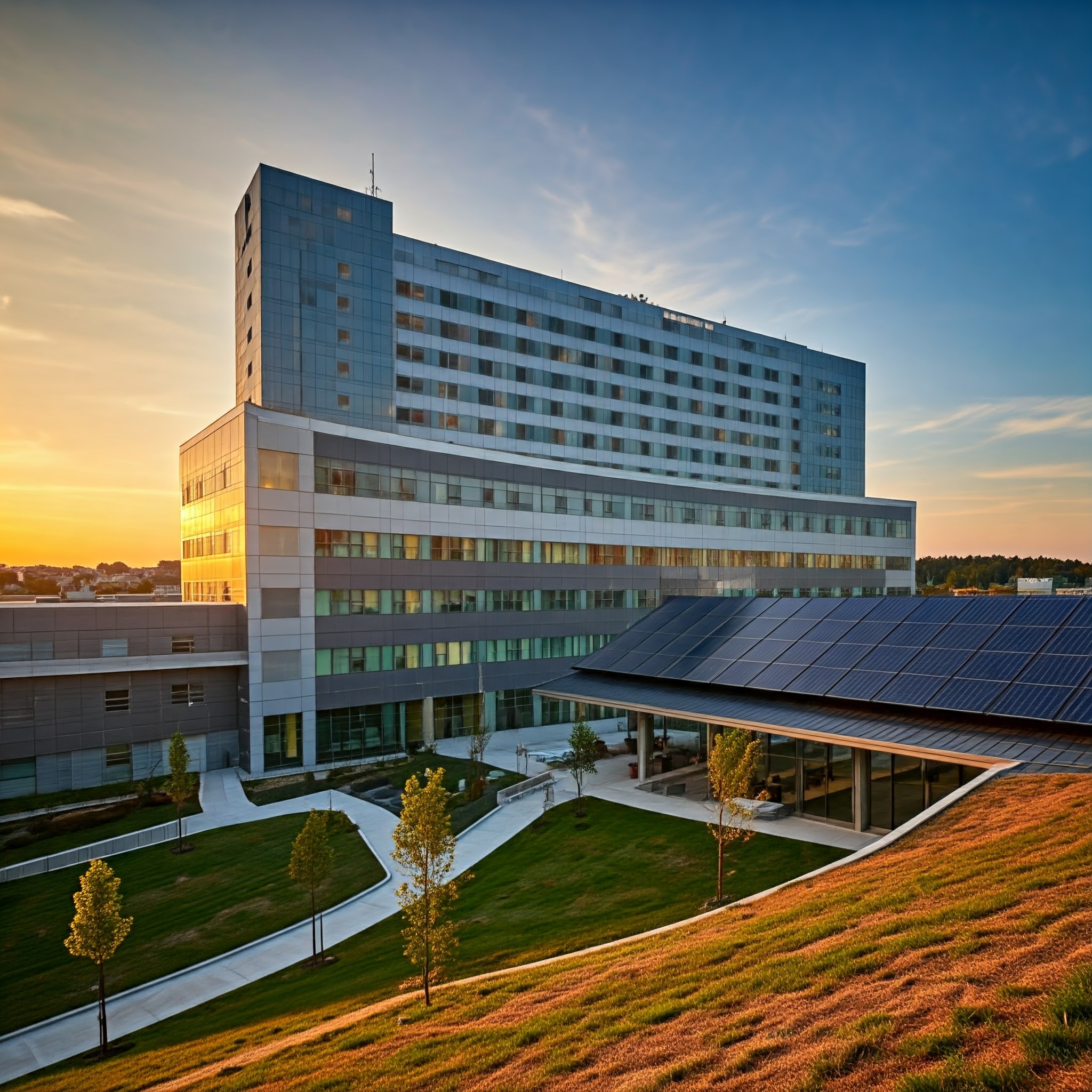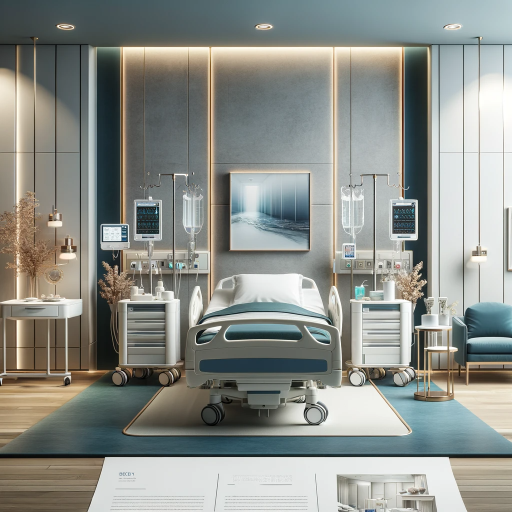A lot of us get nervous when we think about going to the hospital. But have you ever thought about how the place where you go adds to your stress? Hospitals that are too busy, have old equipment, and have uncomfortable waiting areas all make the experience of being a patient less than ideal. The situation is getting even worse, where the healthcare system is struggling to keep up with the growing number of people who need services. Medical tourists are becoming more common, which makes it even more important for hospitals to be functional and built with patients’ well-being in mind.
Hospitals are known for cutting-edge treatments, but they often lack the healing atmosphere that they need to be truly effective. Not getting enough privacy in patient halls, emergency rooms that are too crowded, and old equipment are all things that can make care less than ideal. In addition, it is still hard to incorporate current technology into hospital design, which leaves a lot to be desired in terms of operational efficiency and patient satisfaction.
MAKING HOSPITALS BETTER FOR PATIENTS
Focusing on Patients First
Hospitals will be designed with the patient in mind, creating spaces that help people feel comfortable and relaxed. It’s becoming more important to create spaces that focus on comfort, mental health, and healing. Bright natural light, soothing colors, and nature-inspired designs (which bring nature inside) will help reduce stress and make recovery easier. More hospitals will offer private rooms and spaces that give patients a sense of control over their surroundings.
Key Points:
- The safety and mental health of patients will be the most important things in hospital design.
- Nature-inspired designs, soothing colors, and natural light help with healing.
- Patients will recover in private, personalized areas, offering comfort and privacy.
Caring for the Environment
Hospitals will become more eco-friendly by using sustainable materials, energy-efficient lighting, and designs that reduce waste. These green features help hospitals reduce their impact on the environment while promoting health and wellness.
Key Points:
- Green buildings and sustainable design are becoming more common.
- Hospitals will use eco-friendly materials and energy-efficient systems.
- Environmentally friendly hospitals contribute to the goal of sustainable growth.
Using Technology to Improve Care
Hospitals will become smarter by integrating new technologies that help doctors and nurses provide better care. Touchless systems and smart furniture will make it easier for patients to interact with staff. Digital tools will help both staff and patients communicate more efficiently, improving the overall experience and safety.
Key Points:
- Technology will help hospitals run smoothly and improve the patient experience.
- Smart devices, AI, and touchless systems will enhance care and communication.
- Hospitals will be equipped with technology to track patient health and manage hospital operations more effectively.
Making Spaces Flexible
Being flexible is crucial in healthcare. Hospitals will have modular spaces that can be easily adapted to meet the changing needs of patients. These flexible layouts are particularly important in emergency rooms and critical care areas, where the situation may require quick changes to the hospital space.
Key Points:
- Flexible and modular spaces will make hospitals more adaptable to changing patient needs.
- Hospitals will have movable walls and furniture for easy reconfiguration.
- Emergency and critical care areas will be designed for quick adjustments.
Focusing on Wellness
Hospitals will focus on wellness for both patients and staff, creating spaces where people can relax and recharge. These wellness areas will help reduce stress and anxiety for everyone in the hospital. Features like soundproofing, ergonomic furniture, and calming colors will be included to create a peaceful atmosphere.
Key Points:
- Wellness-focused designs will reduce stress and promote relaxation.
- Relaxation rooms and wellness centers will become important parts of hospitals.
- Hospitals will include soundproofing and ergonomic furniture for comfort.
Considering Culture
It’s important that hospital designs reflect the local culture and make all patients feel welcome. The hospital will reflect the rich history and traditions while still meeting international healthcare standards. Cultural awareness in the design will ensure a welcoming environment for people from different backgrounds.
Key Points:
- Hospital designs will highlight local culture and traditions.
- Cultural sensitivity ensures all patients feel at home and respected.
- Balancing modern design with cultural traditions will be essential for creating welcoming spaces.
Improving Accessibility
Hospitals will focus on universal design principles to ensure that everyone, regardless of their abilities, can access the building and move around comfortably. This includes wider hallways, easy-to-use entrances for people with mobility challenges, and special rooms to meet the needs of those with disabilities. The goal is to create spaces that are welcoming and accessible to all patients and staff.
Key Points:
- Hospitals will be designed with accessibility in mind for patients and staff of all abilities.
- Entrances, rooms, and corridors will be easy to navigate for people with disabilities.
- Hospital designs will prioritize inclusivity and ease of use for everyone.
OVERCOMING CHALLENGES IN HOSPITAL DESIGN
While these improvements are exciting, they come with challenges. Hospitals may face high costs, the difficulty of redesigning existing spaces, and the need to train staff to use new systems. However, solutions like modular designs allow changes to be made gradually, and new technologies are making it easier for hospitals to operate efficiently.
Key Points:
- Modernizing hospitals can be expensive and challenging to implement.
- Phased improvements and modular designs make it easier to update hospitals gradually.
- Staff must be trained to use new technologies and systems for successful implementation.
WORKING TOGETHER FOR BETTER HOSPITAL DESIGN
Healthcare workers, architects, and designers need to collaborate closely to create hospitals that meet both medical and comfort needs. Designers with expertise in healthcare are essential in bridging the gap between the medical requirements and the aesthetics, ensuring that the design promotes the best health outcomes for patients.
Key Points:
- Collaboration between healthcare workers, architects, and designers is crucial for success.
- Designers with experience in healthcare are key to creating patient-focused environments.
- Aligning design with medical goals will improve patient care and outcomes.
THE FUTURE OF HOSPITAL DESIGN
As technology continues to evolve, hospital designs will change to incorporate more advanced tools, such as virtual and augmented reality, to enhance patient care and medical training. Hospitals will also focus more on community health and provide services aimed at preventing illness and promoting overall wellness.
Key Points:
- The future of hospital design will be shaped by technological advancements.
- Hospitals will focus on offering a broader range of services, beyond just medical care.
- Virtual and augmented reality will become more common in both patient care and medical training.
IN CONCLUSION
The design of hospitals today is just the beginning of a new, more patient-friendly approach to healthcare. These changes, including the integration of technology, sustainability, and cultural sensitivity, will make hospitals not only more comfortable but also more effective places of healing. Healthcare leaders, architects, and designers must focus on these improvements to create spaces that promote better health and well-being for everyone.
FAQs
Why is patient-centered design important when designing the inside of a hospital?
Patient-centered design focuses on creating healing spaces that make patients feel less stressed, helping them recover faster.
How can hospitals be designed to be more environmentally friendly?
Hospitals can use eco-friendly materials, energy-efficient lighting, and waste-reducing methods to lessen their impact on the environment.
How will technology play a part in how hospitals are built in the future?
Technology will make hospitals more efficient, improve patient care, and help staff communicate easily using smart systems and devices.
In what ways do cultural factors affect the planning of hospitals?
Designing hospitals with cultural sensitivity ensures that patients feel welcome and comfortable while respecting local traditions and customs.

